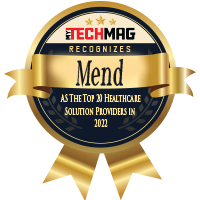How COVID-19 Has Accelerated the US Healthcare Market
Breakthrough advancements and innovations are likely to strengthen the healthcare business in 2022. The majority of the significant revisions are still in the works!
The US healthcare market is rapidly booming, with the national healthcare product’s value expected to reach $6 trillion by 2026. There are numerous healthcare opportunities available, and it is never too late to prepare in advance. Make sure you use digital technology to entice more customers, increase employee productivity, boost profitability, and improve patient care.
The medical technology industry’s operating environment becomes more sophisticated, competitive, and costly each year. Even as the medtech sector prepares for the third year of working under conditions determined by the COVID-19 pandemic, there is no reason to believe that 2022 will deviate from the trend. The Covid-19 pandemic has driven healthcare facilities on the verge of collapse, and the survivors are in desperate need of waste-reduction and efficiency-improvement measures.
“According to “The Internet of Healthcare Report,” 64 percent of healthcare executives concede that their firms will never have enough personnel to handle the volume of data.”
“A staggering 99 percent believe AI will enable employees to shift their focus from menial tasks to significant, patient-centered activities.”
This article will look at the major medical technology trends and breakthroughs that are likely to occur in the near future. The objective is to improve the quality and affordability of healthcare services, as well as predict and prevent diseases rather than treating them once they have developed.
MedTech Trends in 2022
The pandemic of COVID-19 has accelerated the adoption of disruptive technology in various fields, including healthcare. The following are areas of predicted growth in 2022 and beyond that will have an impact on career opportunities.
-
AI in MedTech
Artificial intelligence (AI) in healthcare has risen in popularity, and it will be one of the most critical Medtech developments in 2022 and beyond. Investment in the healthcare field has dramatically increased since venture capitalists became interested in AI solutions. According to a KPMG report from 2021, the trend is here to stay, at least for the time being.
“According to the survey, healthcare businesses will emphasize their Medtech AI investments over the next two years, with telemedicine (38 percent), robotic tasks (37 percent), and patient care delivery being the top three priorities (36 percent).”
AI-driven healthcare solutions can address the requirements of various stakeholders, enabling physicians to be more productive by accelerating diagnosis, improving patient access to care, and improving outcomes.
“According to forecast by MarketsandMarkets, the global market for AI in healthcare is expected to increase from $6.9 billion in 2021 to $67.4 billion in 2027.”
According to Deloitte, a quarter of Medtech businesses would have established solutions leveraging machine learning AI capabilities by 2021.
“According to a Statista poll of US healthcare business experts conducted in 2021, 40 percent of respondents found healthcare AI solutions to be more lucrative than they anticipated.”
-
Telemedicine
As COVID-19 struck, telemedicine surged in prominence, leading to an increased demand for remote health-related services amid lockdowns. As the world continues to combat the pandemic, the trend of diagnosing and treating patients through telecommunication technology and electronic information will persist in 2022 and beyond.
“According to a report by McKinsey, from 2021, telehealth utilization had soared to 38 times the pre-COVID-19 baseline.”
Telehealth business models are evolving, and by 2022, a wide range of services will be available.
“According to Fortune Business Insights, the telehealth market is currently valued at $90.74bn and is anticipated to rise to $636.38bn by 2028.”
-
Medical Robotics
Another Medtech trend that will dominate the business in 2022 and beyond is breakthroughs in medical robotics. In modern medicine, the potential for deploying robotic assistants and automated systems is boundless. The different types of robotic technology can automate hospital workflows, which could help them save money on recruiting trained healthcare employees.
“According to a 2021 Verified Market Research report, the global market value of medical robots will hit $23.92 billion by 2028. The market was estimated to be worth $8.16bn in 2020.”
With this in mind, AI-driven and robotic systems will be leveraged to enhance rather than replacing conventional techniques, resulting in a strong fusion of the past and future.
-
VR and AR in Healthcare
Medical professionals and hospitals both benefit from virtual reality technology. VR is employed for the following purposes:
- Treatment of patient ailments.
- Training medical professionals.
- Providing assistance to surgeons.
“According to Fortune Business Insights’ prediction for 2021, the VR in healthcare sector will rise from $1.2 billion in 2021 to $11.65 billion in 2028.”
Medical diagnosis and education will both benefit significantly from augmented reality. With virtual reality technologies, an individual is placed in computer-rendered or fully simulated surroundings. This might help medical students feel more at ease in virtual scenarios that are similar to what they could experience in real life, and practice their techniques without actually visiting hospitals or interacting with real patients.
Wrapping Up
These 2022 Medtech industry trends and statistics indicate that digital disruption and technological advancements will continue to drive the healthcare industry’s development in the near future. Smarter healthcare solutions will evolve as AI in Medtech gains momentum, benefiting health facilities, physicians, and patients.








